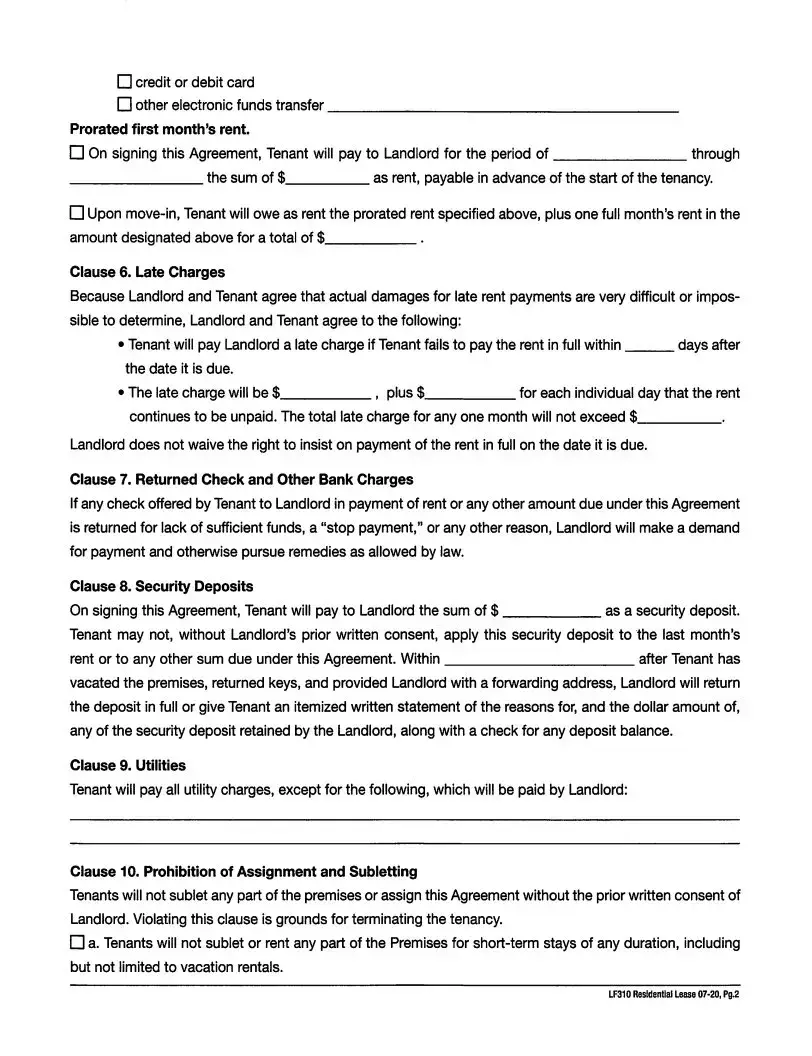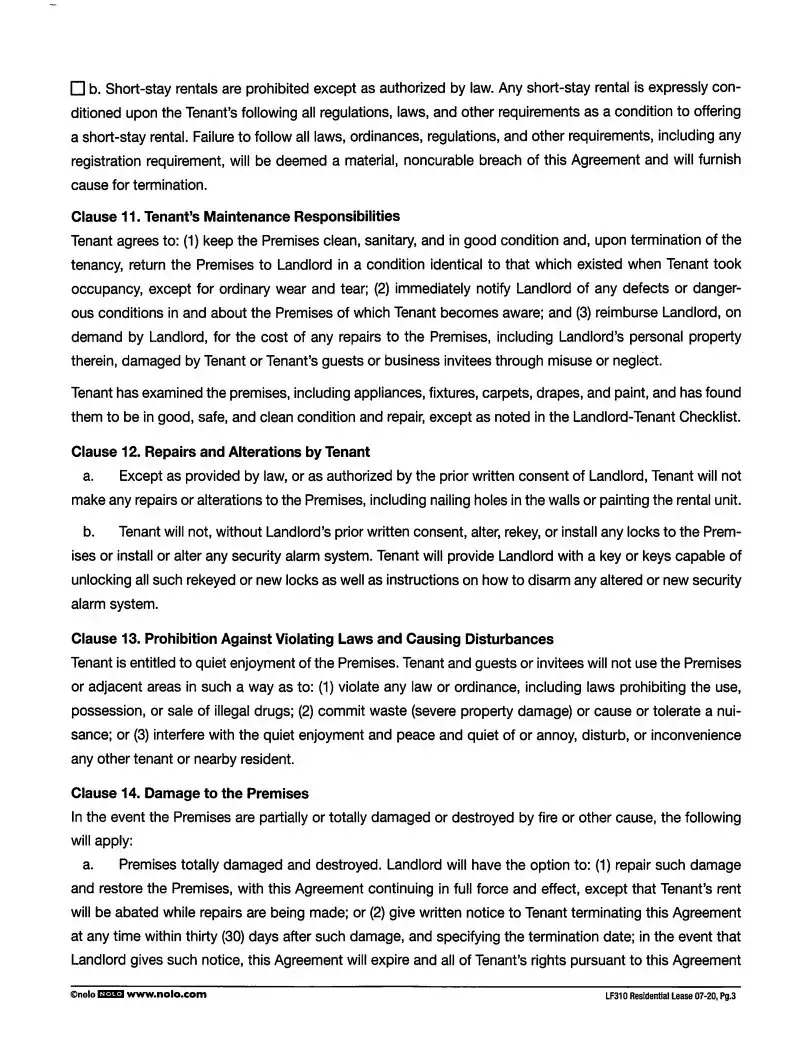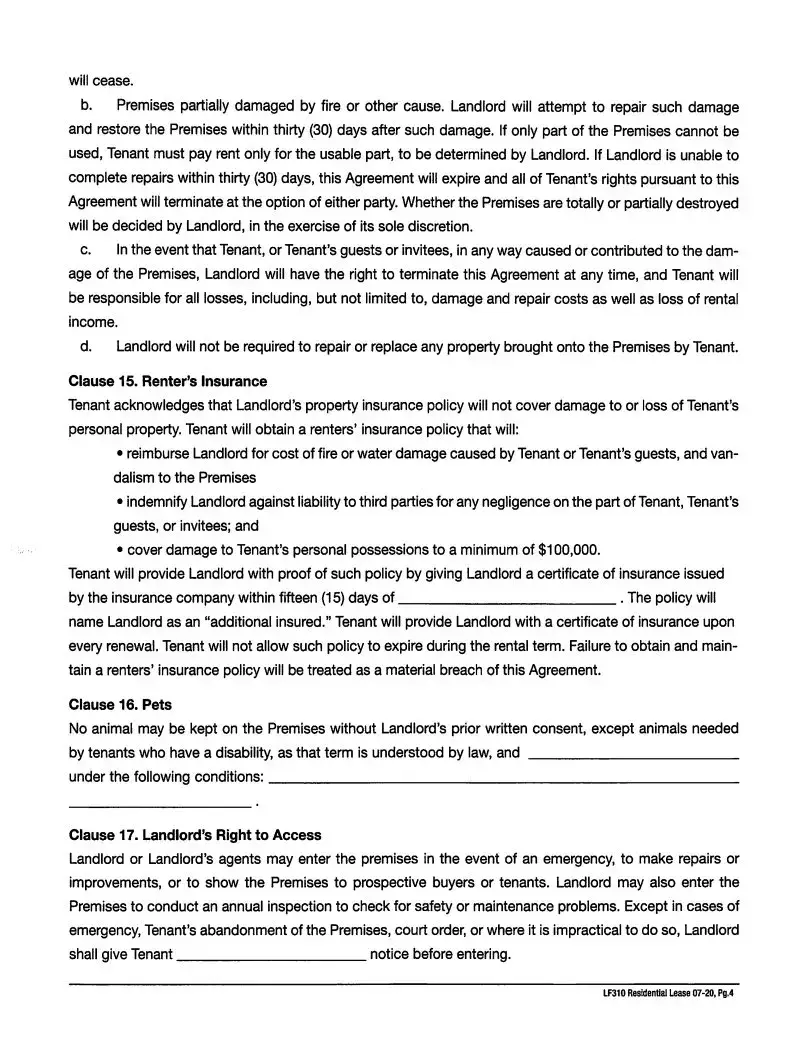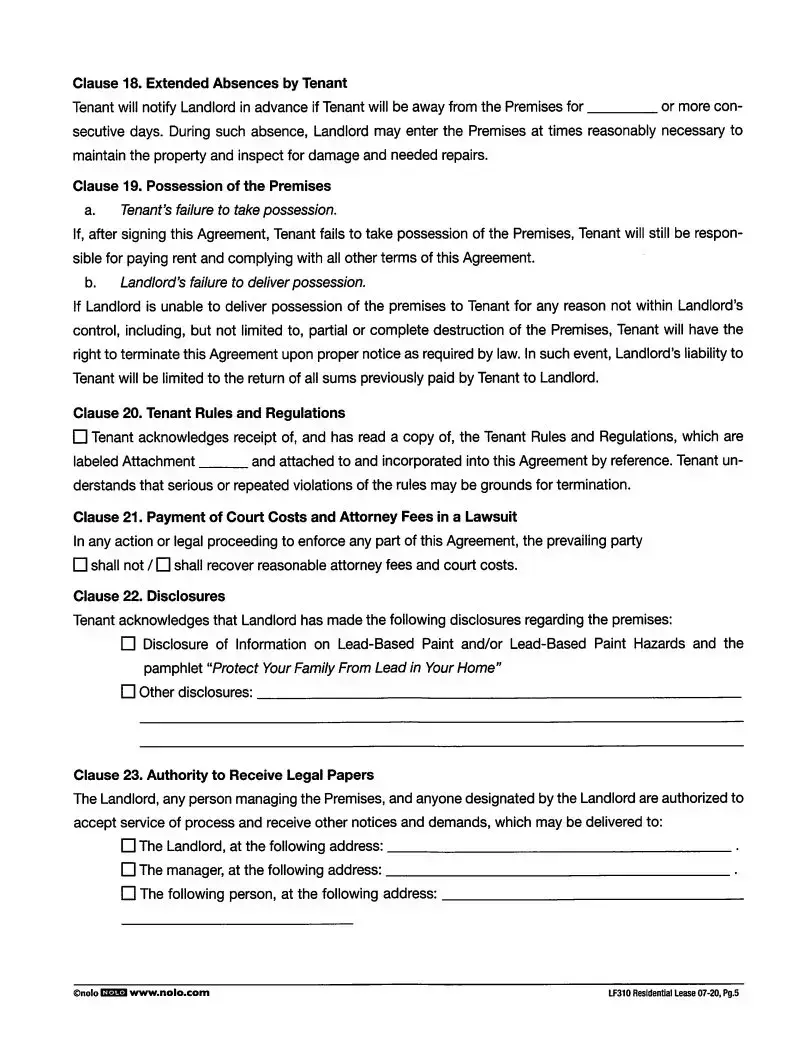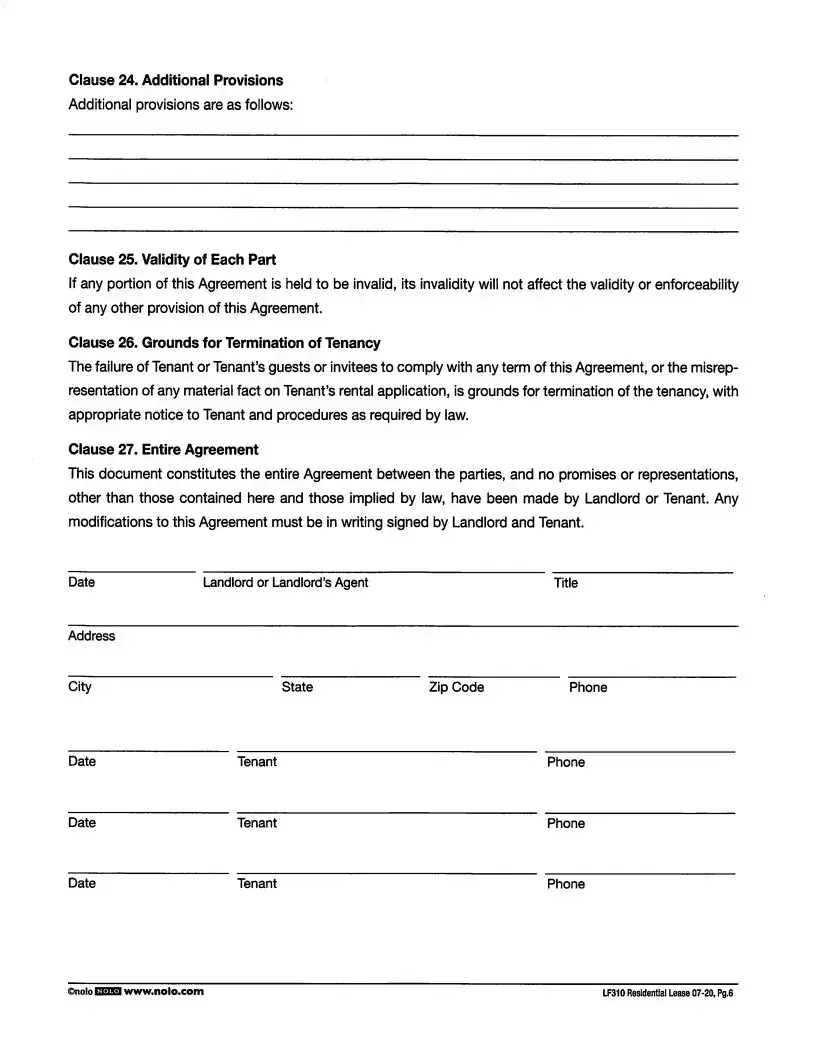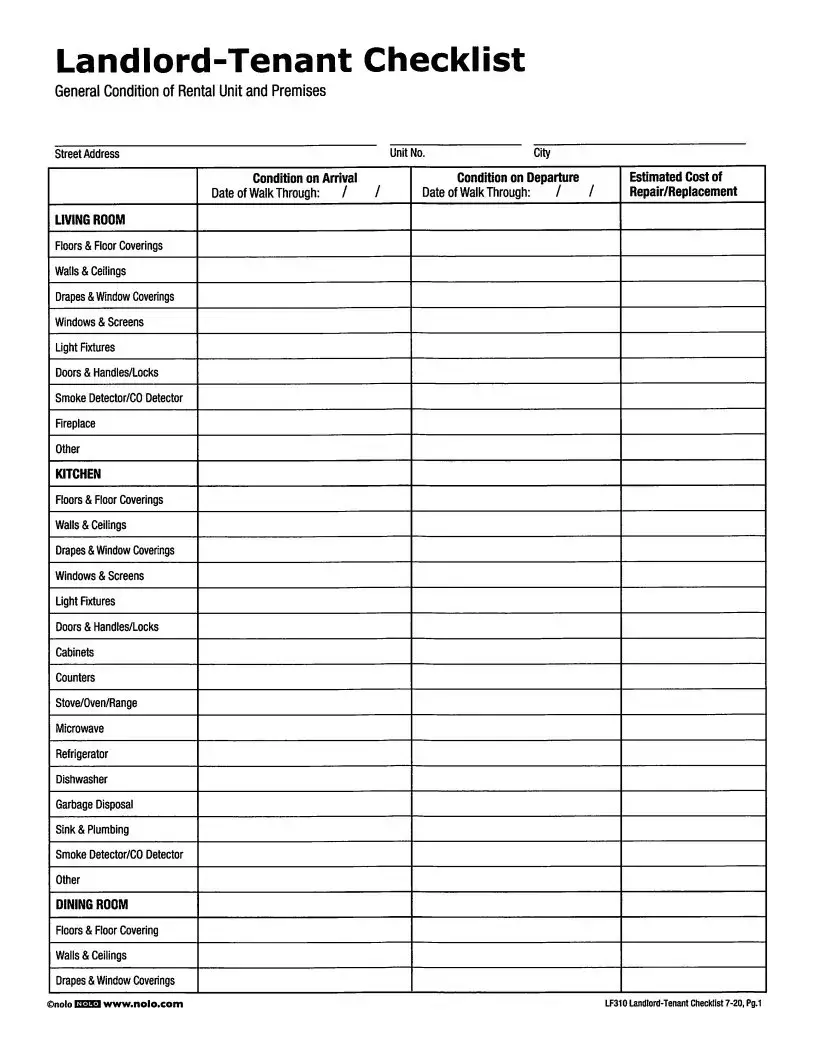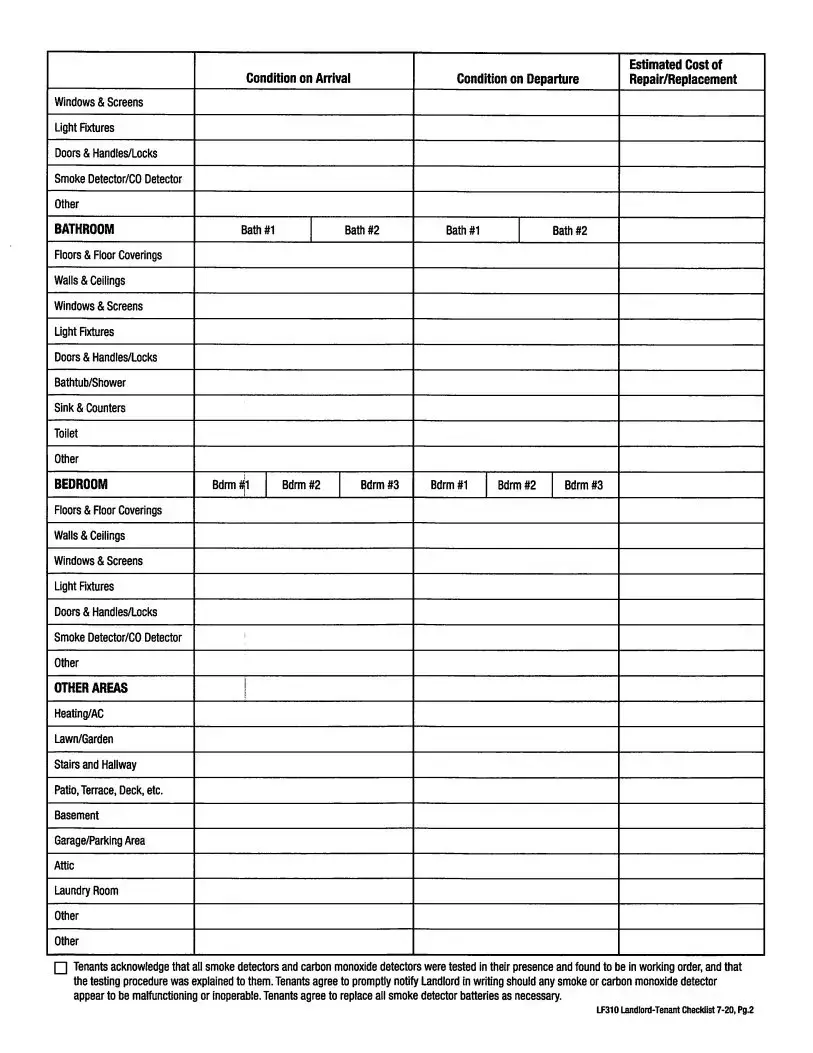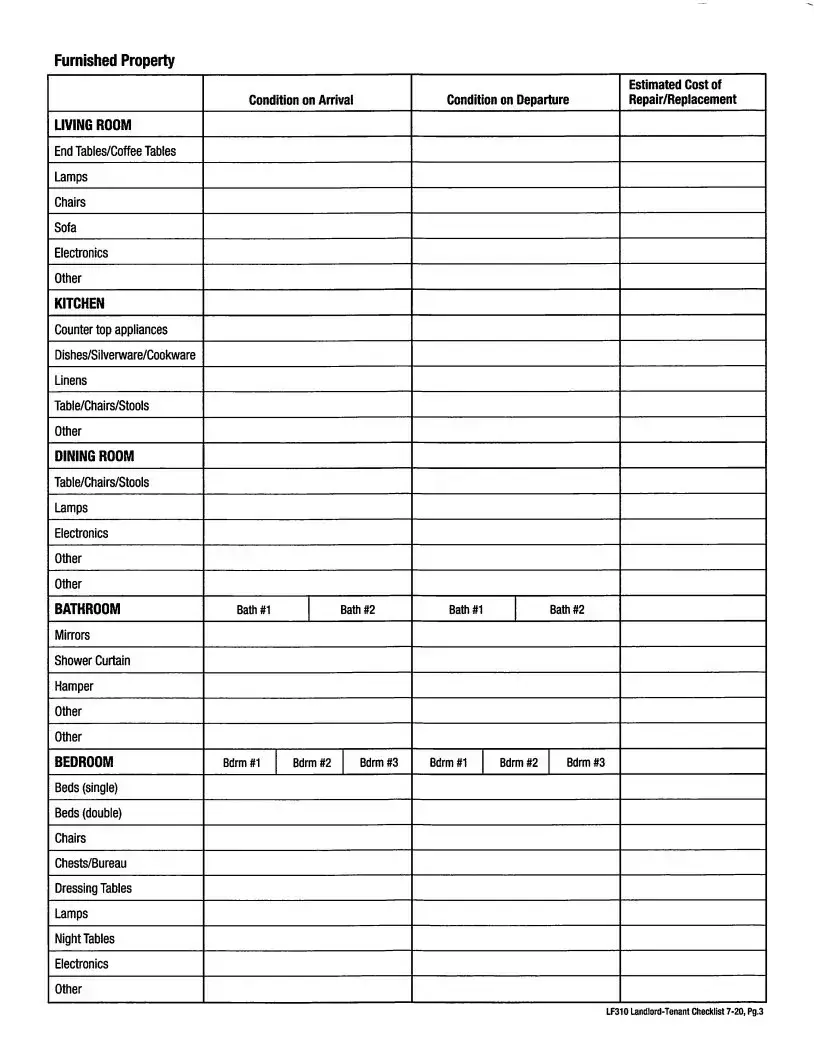Lf310 Residential Lease PDF Form
The Lf310 Residential Lease form is a standardized document used to outline the terms and conditions of a rental agreement between a landlord and tenant. This form ensures clarity regarding the responsibilities of both parties, including payment of rent, use of the premises, and security deposits. To get started on your rental agreement, fill out the form by clicking the button below.
Launch Editor


